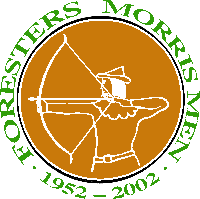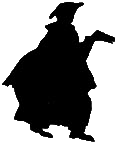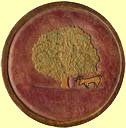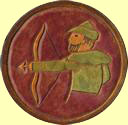 |
Foresters
Morris |
The origins of the morris
|
|||
The origins of the morris |
|
Foresters Morris as part of the Chatsworth House Spectacular. |
The following is an extract from an edition of the
BBC Radio 4 programme "Making History" on 21st May 2002. English Morris Dancing – the disputed origins Professor Alun Howkins, professor of social history at Sussex University, discussed the origins of English Morris Dancing. He said that, as with many folk customs, the origins are hidden in the mists of time and coloured by later perceptions, which may or may not have been correct. It is possible that the word Morris is derived from the word ‘Moorish’ or ‘morisco’ (a derogatory term meaning ‘little Moors’). Certainly in the very late middle ages, Morris dancers were sometimes referred to as morisco dancers, but it is pretty certain that, whatever the origin of the word, there is no evidence that the dance came from the Moors or entered the country with the armies of John o’ Gaunt or anything of that sort. Neither is there proof of any connection between Moorish dancing and Morris dancing. According to Professor Howkins, when people recorded these customs in the 1890s, they were obsessed with seeking out ancient beginnings. In the seventeenth century there had been suggestions of a connection with Moorish dancing and it was adopted as a convenient theory. It fitted in, for example, because some dancers blacked up their faces and attached bells to their legs, which was believed to be something to do with North Africa. Similarly, there is no evidence that Morris dancing has any connection with pagan festivals. This form of dance probably originated in the European courts of the fifteenth century and was further developed in the sixteenth century. The Tudors were keen on the Morris dance and it became associated with May Day revels. To this end, there is also a fairly strong link with church ales. In mediaeval and Renaissance England, the churches brewed and sold ales, including wassail. These ales were sold for many occasions, both seasonal and sacramental – there were christening ales, bride’s ales, clerk, wake and Whitsun ales – and were an important means of fund-raising for churches. The Whitsun ales were produced in May for semi-secular festivals and celebrations, usually at Whitsun, hence the name. Ale celebrations had been connected with the Church since monastic days when monasteries offered accommodation for pilgrims. The fund-raising nature of these occasions puts them in line with village fetes, church fetes being a continuance of the church ale sales. The ales were suppressed by the Puritan authorities in the seventeenth century and, when some reappeared in the late seventeenth and early eighteenth centuries, they usually had associated dancing – Cotswold Morris dancing for instance. Cotswold is the most common form of Morris. The men are dressed in white and adorned with ribbons, bells and hats with flowers in them, and dance with sticks and handkerchiefs. For various reasons, church ales and Whitsun ales survived quite late in the south-west Midlands. Most of the Cotswold Morris tradition comes from this region and many of the Cotswold Morris sides gave dances to Cecil Sharp (the early twentieth-century folk music collector and editor) in the early 1900s and linked them to Whit ales or Whitsun celebrations. The significance of the sticks and handkerchiefs is unknown. Most folk customs evolve, gaining and losing elements as they change over time. Sticks could suggest combat, which might have been one of the origins. However, Morris was also danced by women from the late mediaeval period. That Cotswold Morris in the nineteenth century was danced only by men is probably more to do with Victorian attitudes than with the true traditions, which always involved women as well as men. Nevertheless, even nowadays, most Morris sides are either all-men or all-women – very few are mixed. Further reading John Brock (editor), Morris Dance Tunes (English Folk Dance and Song Society, 1998) Keith Chandler, Morris Dancing in the English South Midlands, 1660–1900 (Hisarlik Press, 1993) John Forrest, The History of Morris Dancing 1483–1750 (James Clarke & Co. Ltd, 1999) CD The Traditional Morris Dance Music Album (various artists) (Music Club, 1998: ASIN B0000252HI) Further information online. Other outlines of the history of English Morris Dancing can be found on the following websites: Renaissance Faire: An US-based site about all things ‘Renaissance’. The Morris Ring: The National Association of Men’s Morris and Sword Dance Clubs. Please note: the BBC accepts no responsibility for the content of external websites. |
 |
||||||
 |
Print this page E-mail to: bagman@foresters-morris.org.uk or to webmaster@foresters-morris.org.uk Updated Wednesday 01-May-2024 12:14 Website content copyright © Eric Foxley. Eric manages web
sites for
|
 |
||||||
| |
||||||||